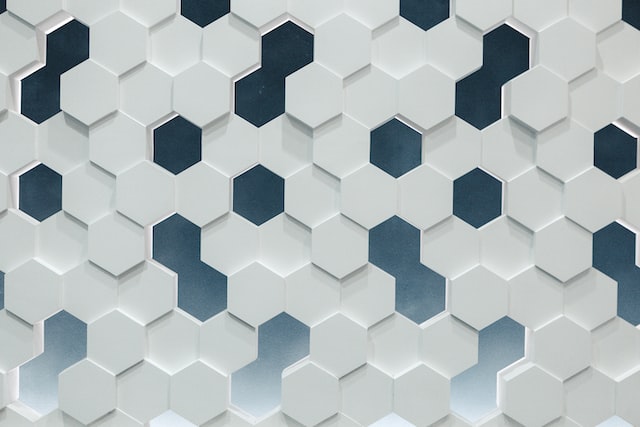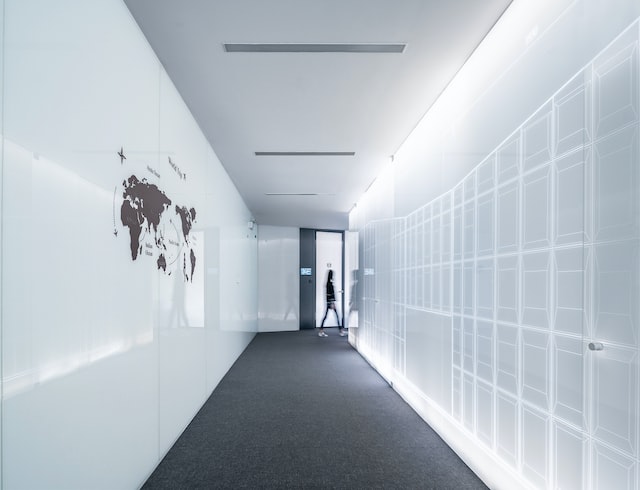Office walls are a good place to experiment with creative wall painting ideas. You can paint your office walls any color you like! It will be a great way to boost your creativity and make the office feel more homey and relaxing. Use different colors, textures, and shapes to add style to your office.
Dots And Lines
Incorporating dots and lines is a great way to make a statement on your wall. It can be as simple as a single pattern or as complex as a tree full of dots. The key is to make sure that the colors are similar in tone and saturation. Begin by painting the darkest shade on the lowest part of the wall and feathering out with a paintbrush while still wet. Next, add the next shade using long sweeping strokes and blending. This creates a layered look.
Another great option is to paint stripes. These are easy to create, but they do take a while. If you don’t want to use a stencil, you can just trace the pattern yourself. It’s easier to do this using a sharpie. Start by making a series of randomly spaced dots and then draw the lines connecting them. If you want to create a more subtle design, consider using acrylic paint mixed with water. However, be careful about choosing colours, because the watercolour effect can overwhelm the room.
Stripes
If you want to update your walls without having to spend a fortune, stripes are a great option. You can use stripes in a symmetrical pattern or mix-and-match them for a more dynamic look. This pattern works well in both large and small areas. Moreover, stripes look great when mixed with other patterns, such as checks, spots, or florals.
If you’re painting a wall in your office, stripes make an easy and affordable way to change the look of the room. You can choose thin or thick stripes to add a dramatic charm to your space. You’ll need some tape to make the stripes straight and even. The Home Depot guide will give you step-by-step instructions and tips on how to tape off walls and paint the stripes correctly. Alternatively, you can also try bold blocks of color. Place them on the center of the wall, and use tape inside them for a more dimensional look.
Texture
Texture is a great way to add depth to any colour scheme. Created by blending two colours of the same hue, the textured effect can be an excellent choice for rooms where wallpaper isn’t an option. In this space, muted tones are offset by black metal accessories, while hints of orange and light grey are added to inject a warming element.
If you’re looking for a subtle yet stylish texture, consider adding a line or streak design to your walls. This technique is easy to do and requires minimal tools. It can transform the look of a room drastically and add drama to the aesthetic theme. However, keep in mind that texture designs take some patience and a good foundation.

Color Blocking
If you are looking for some wall painting ideas for your office, you may want to consider color blocking. Color blocking is the practice of using two or more colors together in an unusual pattern or design. It first emerged in the fashion world and has since made its way into interior design. The technique can be used on walls, ceilings, furniture, and accessories. For your office, you can use a bold color that pops against neutral tones to add a modern feel.
The beauty of colour blocking lies in its ability to add personality to any room, and most of the time, this style only requires a few hours of your time. Plus, color blocking is a great way to make use of leftover paint. It can also highlight architectural details and function as a form of wall art. And, if you make a mistake while painting, it’s not hard to fix!
Ombre
If you want to create a dramatic ombre effect on your walls, try to make three sections on your wall equal in width. The top section should be the lightest hue, while the bottom section should be the darkest. Ensure that you leave a space of six inches between the edges of each section before painting. Next, paint the middle section with the second-lightest hue. To do this, use a dry brush and paint it at a 45-degree angle. Next, paint the bottom section with the darkest hue. Allow at least a foot between the two sections.
To create a subtle ombre effect, use similar-colored paint. You can use a bold dark color that blends with the lightest hue. Choose your color carefully to ensure the look is subtle. You can even replicate the bottom edge of the middle color by using a 4″ paint brush.
Textured Walls
If you want to give your office a contemporary look, consider using textured paint. This paint is often applied with a sponge, roller, or brush. It also comes in a variety of different names. You can apply the texture paint in different ways, such as by using a stencil or a textured finish.
Textured walls are more popular than ever before. You can choose from plaster, paint, wood, or tiles, and match them with other textured furniture and accessories. Designer Maria Speak explains how to go about adding texture to a space.
Color Therapy
Color therapy is a method of using specific colors for psychological or physical benefits. Each color has different healing properties, which can affect the way you feel. These colors are used in many settings, including offices, schools, hospitals, prisons, and private homes. Colors such as blue and yellow are often used to boost the mood and promote relaxation, while reds are said to reduce aggression and violence. By using specific color combinations, you can create the right environment for the right person.
When choosing colors for your office, consider the type of work you do in the room. Some colors are stimulating, like blue, and can boost your productivity. Red, on the other hand, creates a sense of urgency, so it may be useful for engineering or construction companies. Finally, yellow is a happy color that can help raise the mood of workers and make them more motivated.


